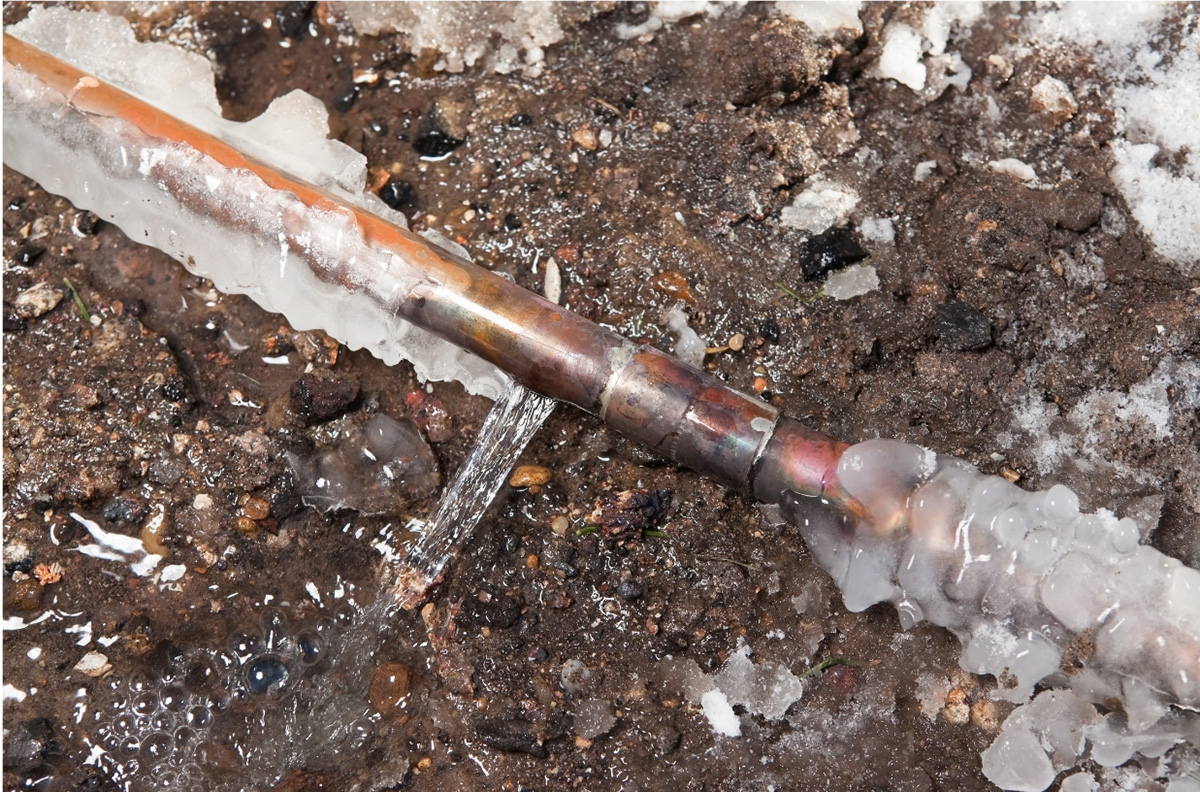Protecting Against Frozen Plumbing: Top Methods for Winter
Protecting Against Frozen Plumbing: Top Methods for Winter
Blog Article
This great article in the next paragraphs involving Prevent Frozen Pipes is incredibly engaging. Check it out yourself and decide what you think about it.

Cold weather can wreak havoc on your plumbing, particularly by freezing pipes. Right here's just how to stop it from taking place and what to do if it does.
Intro
As temperature levels decrease, the risk of icy pipelines increases, potentially bring about pricey repair services and water damages. Understanding just how to avoid frozen pipelines is important for homeowners in cool climates.
Recognizing Frozen Pipelines
What causes pipelines to freeze?
Pipelines freeze when exposed to temperatures listed below 32 ° F (0 ° C) for prolonged periods. As water inside the pipes ices up, it expands, taxing the pipeline walls and potentially causing them to break.
Dangers and problems
Icy pipes can result in supply of water disruptions, residential or commercial property damage, and costly repair services. Ruptured pipelines can flooding homes and cause substantial architectural damages.
Indications of Frozen Water Lines
Recognizing icy pipes early can prevent them from bursting.
How to recognize icy pipes
Search for decreased water circulation from faucets, unusual smells or sounds from pipes, and noticeable frost on revealed pipes.
Avoidance Tips
Protecting susceptible pipelines
Wrap pipelines in insulation sleeves or utilize heat tape to shield them from freezing temperatures. Concentrate on pipes in unheated or external areas of the home.
Home heating techniques
Keep indoor areas sufficiently heated, particularly locations with pipes. Open closet doors to enable cozy air to flow around pipes under sinks.
Safeguarding Outside Pipes
Yard hose pipes and exterior faucets
Separate and drain yard tubes before winter season. Set up frost-proof faucets or cover outside faucets with shielded caps.
What to Do If Your Pipes Freeze
Immediate actions to take
If you think frozen pipes, keep taps open to soothe pressure as the ice melts. Utilize a hairdryer or towels taken in hot water to thaw pipes gradually.
Long-Term Solutions
Architectural changes
Take into consideration rerouting pipes away from outside walls or unheated areas. Include additional insulation to attic rooms, cellars, and crawl spaces.
Upgrading insulation
Buy top notch insulation for pipes, attic rooms, and walls. Correct insulation helps keep consistent temperature levels and decreases the threat of frozen pipes.
Verdict
Stopping icy pipes needs aggressive measures and quick feedbacks. By understanding the causes, indications, and preventive measures, house owners can shield their pipes throughout cold weather.
6 Proven Ways to Prevent Frozen Pipes and Protect Your Home
Disconnect and Drain Garden Hoses
Before winter arrives, start by disconnecting your garden hoses and draining any remaining water. Close the shut-off valves that supply outdoor hose bibs and leave the outdoor faucet open to allow any residual water to drain. For extra protection, consider using faucet covers throughout the colder months. It’s also important to drain water from any sprinkler supply lines following the manufacturer’s directions.
Insulate Exposed Pipes
Insulating your pipes is an effective way to prevent freezing. Pipe insulation is readily available at home improvement stores and is relatively inexpensive. Pay close attention to pipes in unheated areas such as the attic, basement, crawl spaces, or garage. Apply foam insulation generously to create a buffer against the cold. You can also wrap your pipes in heat tape or thermostat-controlled heat cables for added warmth.
Seal Air Leaks
Inspect your home for any cracks or openings that could let in cold air. Seal any holes around the piping in interior or exterior walls, as well as the sill plates where your home rests on its foundation. Additionally, make sure to keep your garage door closed unless you’re entering or exiting. Leaving it open creates a significant air leak that can lead to frozen pipes.
Allow Warm Air Circulation
During cold snaps, it’s essential to allow warm air to circulate evenly throughout your home. Leave interior doors ajar to promote better airflow. Open kitchen and bathroom cabinets to help distribute heat consistently around the rooms. If you have small children or pets, be sure to remove any household chemicals or potentially harmful cleaners from open cabinets for safety.
Let Faucets Drip
A small trickle of water can make a big difference in preventing ice formation inside your pipes. When temperatures drop significantly, start a drip of water from all faucets served by exposed pipes. This continuous flow helps prevent the water from freezing. Additionally, running a few faucets slightly can relieve pressure inside the pipes, reducing the chances of a rupture if the water inside does freeze.
https://choateshvac.com/6-proven-ways-to-prevent-frozen-pipes-and-protect-your-home/

We were made aware of that editorial about Prevent Frozen Pipes from a friend on our other web blog. Sharing is nice. One never knows, you might be helping someone out. Thanks a lot for taking the time to read it.
Call Us Today Report this page